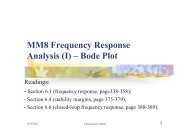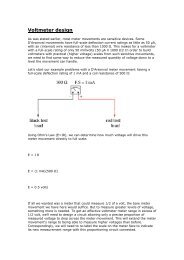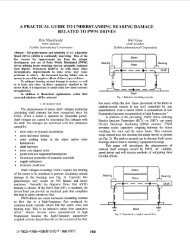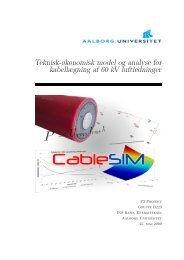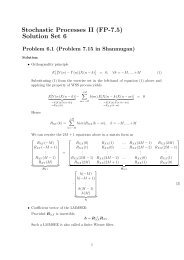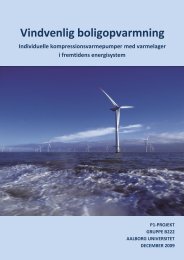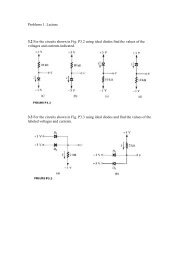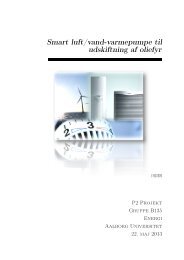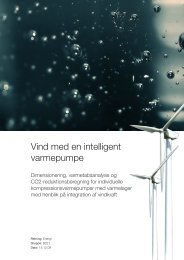Chapter 13 Gas Turbine Power Plants
Chapter 13 Gas Turbine Power Plants
Chapter 13 Gas Turbine Power Plants
You also want an ePaper? Increase the reach of your titles
YUMPU automatically turns print PDFs into web optimized ePapers that Google loves.
where the numerator is proportional to the energy received by the<br />
cooler air, and the denominator is the ideal heat transfer to the<br />
cooler air. Values of s. depend on the effectiveness of the heat<br />
exchanger design and the air flow rate, but typical values of effectiveness<br />
lie in the range 0.6-0.8. Procedures for heat exchanger<br />
design are presented by Incropera and DeWitt (1990).<br />
Compressor and turbine work for the Brayton cycle with regeneration<br />
are handled as with the basic cycle. Only the energy<br />
addition in the combustor, as determined from (<strong>13</strong>.17), is different,<br />
but this increases the thermal efficiency, since the denominator<br />
of (<strong>13</strong>.1) is decreased while the numerator remains fixed. The<br />
denominator Q A can be written alternatively as<br />
M<br />
(<strong>13</strong>.19)<br />
where Mf IM a is the mass of fuel by the corresponding mass of<br />
air, i.e., the fuel-air ratio F/A, introduced in <strong>Chapter</strong> 11. Since the<br />
equivalent heat transfer Q A , resulting from the burning of fuel in<br />
the combustor, is directly proportional to the mass of fuel burned<br />
Mp and since Q A is reduced by the addition of the regenerator, the<br />
amount of fuel required to produce a unit of net work is decreased,<br />
i.e., the specific fuel consumption is reduced. Paralleling<br />
the definition introduced in <strong>Chapter</strong> 11 for internal combustion<br />
engines, specific fuel consumption (sfc) is defined by<br />
m f<br />
-f (<strong>13</strong>.20)<br />
where mj denotes the mass flow rate of fuel and P represents the<br />
net power produced by the gas turbine. Usually the power is the<br />
shaft power to the load, as indicated in Figure <strong>13</strong>.5, and the sfc is




